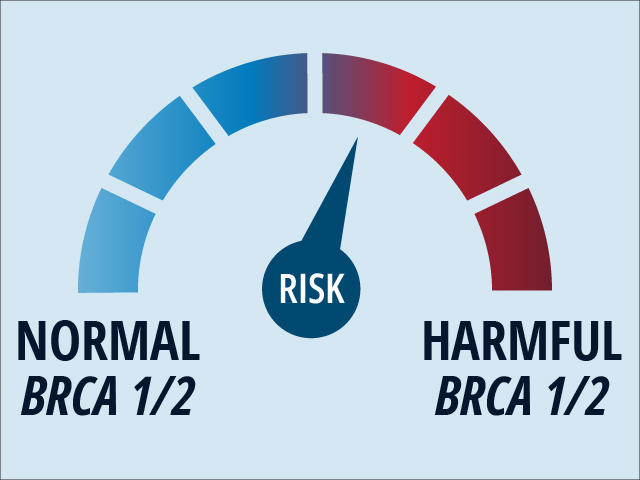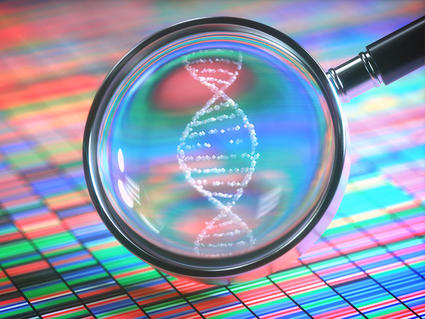Studies Assess Impact of Cancer Risk-Reduction Measures for People with BRCA Changes
, by Carmen Phillips
For women in whom gene testing finds “harmful changes” in the BRCA1 or BRCA2 genes, leading medical groups recommend that they take specific actions to lower their chances of being diagnosed with or dying from breast and ovarian cancer.
Results from two recent large studies now add to findings from earlier studies suggesting that following those recommendations can reduce the risk of dying from these cancers.
In one of the studies, women with harmful changes in BRCA1 who got periodic breast MRI scans, known as MRI surveillance, were less likely to die of breast cancer in the ensuing years than those who did not. The same benefit wasn't seen in women with harmful BRCA2 changes, however.
The second study analyzed the impact of surgery known as a risk-reducing bilateral salpingo-oophorectomy, which involves removing both ovaries and fallopian tubes. Those with harmful BRCA1 or BRCA2 changes who had the surgery, the study found, had a lower risk of dying from ovarian cancer and breast cancer than those who didn’t.
Results from both studies were published February 29 in JAMA Oncology.
“These studies show that [these] cancer risk management strategies … can save lives,” wrote Meghna Trivedi, M.D., and Katrina Armstrong, M.D., of Columbia University Irving Medical Center in an editorial that accompanied both studies.
Nearly all participants in the studies were White, however, raising the question of what these results mean for women of other ethnic and racial backgrounds.
“We have to be careful about how we interpret the results” for people in these groups, said Goli Samimi, Ph.D., of NCI’s Division of Cancer Prevention, who was not involved in the study.
“Hopefully [these findings] are the impetus to do similar studies that focus on enrolling a diverse population of participants,” Dr. Samimi said.
Recommendations for genetic testing, MRI surveillance versus reality
Inherited changes in a host of genes can increase cancer risk. Perhaps of most concern for breast and ovarian cancer are harmful changes (often called pathogenic variants) in BRCA1 and BRCA2.
For example, 60% to 70% of people with harmful BRCA1 or BRCA2 changes will be diagnosed with breast cancer by the time they’re in their 70s, compared with only 13% of those who don’t have such changes.
Because of the substantial risk linked to these inherited genetic changes, leading cancer organizations recommend that people who have them consider taking measures to reduce the likelihood of developing or dying from either of these cancers, explained Tuya Pal, M.D., of the Vanderbilt-Ingram Comprehensive Cancer Center in Tennessee, a member of the study team.
But experts on inherited cancers stress, however, that recommendations are one thing. Their use in the real world is another matter entirely. The barriers and challenges are numerous, Drs. Trivedi and Armstrong wrote.
“First and foremost, more must be done to increase the identification of” people who have harmful BRCA1 and BRCA2 changes, in the form of more genetic testing, they wrote.
The study’s lead investigator, Steven Narod, M.D., of Women’s College Hospital in Toronto, agreed. Recent studies show that genetic testing among at-risk people is increasing. But the fact remains, Dr. Narod said, that “too few people are getting tested.”
For those who are able to get tested, Dr. Pal stressed that it’s critical to get counseling first by a provider with experience in genetics and cancer risk. Such counseling can help people understand what the different test results mean for them personally, including the possible risk reduction measures.
Access to licensed genetic counselors can be an issue for some people, Dr. Samimi said. One study, for example, showed that they are largely concentrated in heavily populated areas.
Getting MRI surveillance can also be a challenge. There are barriers like transportation issues and lack of access to facilities that can perform MRI scans. And despite the recommendations from medical organizations, not all insurers cover MRI surveillance of women with harmful BRCA1 and BRCA2 changes.
Given the continued challenges around the understanding of and access to recommended risk-reduction measures, Dr. Samimi said, the more evidence to support and raise awareness about them the better.
That’s where the large international research program Dr. Narod helped initiate in the mid-1990s, called the Hereditary Breast Cancer Clinical Study Group, comes in. Known as a cohort study, it was initially planned to include just a few hundred participants. It now has nearly 20,000 people with harmful BRCA1 or BRCA2 changes.
Reductions in breast cancer deaths
The study of MRI surveillance included about 2,500 women who participate in this larger research program. About 1,750 had MRI surveillance during the study, and on average, they had five MRIs during follow-up.
Participants were followed for an average of about 9 years, and about 14% in both the MRI and non-MRI groups were diagnosed with breast cancer during the study.
Only a small number of participants died from breast cancer during the study. But among those with harmful BRCA1 changes, getting MRI surveillance was estimated to reduce the deaths from breast cancer over the following 20 years by about 3%.
The reduced likelihood of dying from breast cancer in women with harmful BRCA1 changes was also seen when the comparison was restricted to women in the nonsurveillance group who had at least one mammogram during the study period.
As for the lack of a statistical reduction in breast cancer deaths for those with BRCA2 changes, it may be largely due to two factors, Dr. Narod said: the small number of participants with these changes and who had died from breast cancer.
Surgery reduces likelihood of dying from breast, ovarian cancer
The other study included nearly 4,300 women, of whom about two-thirds had had surgery. All participants had at least a bilateral oophorectomy (removal of both ovaries) and most had a salpingo-oophorectomy (removal of both ovaries and fallopian tubes).
About 20% of all participants were diagnosed with cancer during the study period (a median follow-up of 9 years), mostly breast and ovarian cancers, and most deaths were from cancer.
The percentage of breast cancer diagnoses were very similar between those who did and didn’t have the preventive surgery, but the percentage of ovarian cancer diagnoses was markedly higher in those who didn’t get the surgery.
Overall, participants who had oophorectomy were less likely to die from any cause, which was the study’s primary measure.
For ovarian cancer specifically, about 3.5% of those who didn’t get surgery died from ovarian cancer during the study period, compared with about 0.25% of those who did have the surgery. For breast cancer, it was 2% and 1%.
More genetic testing, maximizing risk-reducing care
Both studies, Dr. Pal said, provide strong evidence about the potential benefits of MRI surveillance or a salpingo-oophorectomy. “That’s very impactful information,” she said.
Dr. Samimi said she’s hopeful that these new findings will further increase awareness about testing among those at risk of having inherited harmful genetic changes, and inform discussions between doctors and their patients about the options for reducing that risk.
And those conversations will hopefully extend to close blood relatives of those found to have these changes, she said.
“We have to do a better job of reaching out to families about their risk,” she continued.
NCI is funding one such effort. Called Traceback, the program is focused on helping researchers identify women who have had ovarian cancer but never got tested for cancer-related genetic changes. After they are found, they and their family members will be offered a chance to be tested.
In Canada, Dr. Narod noted, there’s a study called the Screen Project that offers testing for harmful BRCA1 and BRCA2 changes to Canadian citizens aged 18 and older.
Drs. Armstrong and Trivedi stressed that there’s work to do across the board to “maximize” the care needed to prevent more breast and ovarian cancer deaths. Achieving that goal, they continued, “will require providing equitable access and [insurance] coverage” of all recommended risk-reduction actions.


